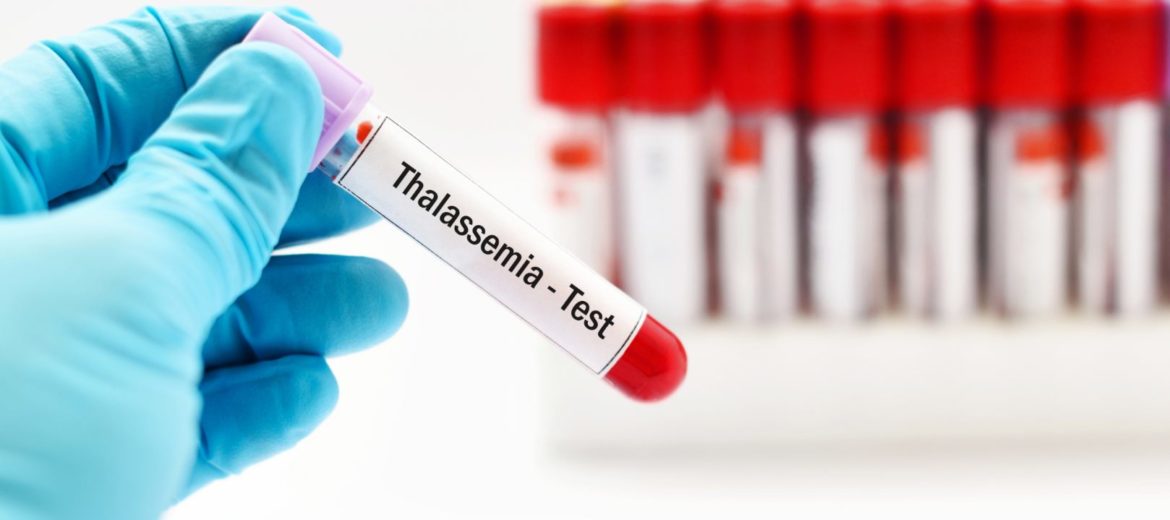Karan and Megha Shah came in for preconception counselling when they were planning their first child. Megha was aware that she had a Thalassemia trait and wanted to get clarity on Thalassemia in pregnancy and any tests to be done before and after they conceived.
Dr. Priti Arora Dhamija, Obstetrician-Gynecologist Sitaram Bhartia hospital in South Delhi with 17+ years of experience advised Karan to get screened for Thalassemia.
“If one partner has Thalassemia, it is important to get the other partner screened to determine the likelihood of the condition being passed onto the baby,” informs Dr. Priti.
What is Thalassemia?
Thalassemia is a hereditary condition in which the body does not produce sufficient hemoglobin, which carries oxygen through the bloodstream. Hemoglobin is a protein found within the red blood cells. This protein itself is composed of four protein subunits (of which two are called ‘alpha globin’ and the other two are called ‘beta globin’).
What causes Thalassemia?
Changes in the gene which produces the beta globin protein causes a condition called Beta thalassemia. Any changes in the gene for the alpha globin subunit cause a condition called Alpha thalassemia.
According to studies, “Beta Thalassemia is the most common single gene disorder in India. Over 9000 thalassemia children are born every year.”
Karan agreed for the test but wanted to know how it would be done.
Thalassemia Screening Before Pregnancy
How do you test for thalassemia?
Before conception, partners are screened for Thalassemia through a test called the Hemoglobin electrophoresis or another similar test called High Performance Liquid Chromatography (HPLC test).
The presence of the Thalassemia trait could also be tested through a blood test called the Complete Blood Count (CBC) that will determine the number of red blood cells and any abnormality in the Hemoglobin concentration.
Thalassemia test results before pregnancy
If your test results show that both you and your partner have a trait/ are a silent carrier of Thalassemia then your baby has
- 25% chances of not getting the disease (Thalassemia major)/ becoming a carrier
- 50% chances of becoming a carrier (Thalassemia trait)
- 25% chances of getting the disease (Thalassemia major)
Megha asked the doctor the main question on her mind.
Is thalassemia bad in pregnancy?
Pregnancy with Thalassemia is classified as a high-risk pregnancy.
In this situation, it is crucial that the expecting parents are regular with their antenatal checkups so that the mother and baby’s health can be closely monitored.
“If only the mother has Thalassemia trait, then she may be at risk of developing anemia in pregnancy and therefore requires vigilance in the antenatal period and appropriate management as per the severity.”
“If both parents have the trait, then comes the added and very important role of prenatal testing. This needs to be done (before 12 weeks) to determine whether the baby has Thalassemia major.”
What are the types of Beta Thalassemia?
Beta Thalassemia minor or Thalassemia trait: With this condition, you have one faulty gene which may cause only mild anemia. If your partner does not have the Thalassemia trait, the child will still be at risk of getting one damaged gene.
Beta Thalassemia Major: This is a severe form of the condition when the child inherits one faulty gene from each parent. The presence of less than the required number of normal healthy red blood cells causes insufficient oxygen to be carried through the body, causing severe life threatening anemia.
With anemia the body doesn’t get enough oxygen to function as it should. As a result, the child experiences fatigue, pale skin, diarrhea, feeding issues, failure to thrive and requires lifelong blood transfusions for survival.
With recurrent transfusions and treatment, complications such as an enlarged heart or spleen also develop.
“When the fetus is found to have beta thalassemia major, some couples decide to discontinue the pregnancy after understanding the lifelong implications,” shares Dr. Priti.
Can thalassemia be detected before birth?
There are two Thalassemia tests during pregnancy through which the condition can be detected before birth.
Both tests carry a small risk of miscarriage (1 in 500 births).
Chorionic Villus Sampling (CVS)
In this Thalassemia test during pregnancy, a sample of the placental tissue is taken between 9-12 weeks.
The placental tissue is analysed for gene composition for Thalassemia.
This test is done under ultrasound guidance and the placental tissue is retrieved using a long thin needle that is inserted either into the vagina or abdomen as the case may be.
You will be asked to rest for about 40 minutes after the procedure. The results of the procedure will be out in 10 days.
“Your doctor may advise bedrest following the procedure because of the chances of miscarriage.”
Amniocentesis
Done between 15-20 weeks, this test involves collecting a sample of the amniotic fluid around your baby.
An ultrasound is performed before this test to assess the fetus’ position and the best place from which to withdraw some fluid.
Your abdomen will be cleaned with antiseptic. You may be given anesthesia before a long needle is inserted into your abdomen.
“It takes about 10 minutes and is only slightly painful as you are given a local anaesthetic,” says Dr. Priti.
You will be asked to rest for sometime after the procedure before leaving the hospital as well as for the next few days.
“Some women may feel cramps or a little vaginal bleeding after the procedure.”
With a proper understanding around the condition, Thalassemia tests during pregnancy, chances of passing the genes, Megha and Karan decided to proceed with the screening and then take the next step.
Planning Pregnancy with Thalassemia
“Many women find out for the first time they have beta thalassemia minor during preconception counselling or first trimester screening in pregnancy.”
In situations where one or both parents have a Thalassemia trait and the fetus is detected to have Thalassemia minor, the couple can continue with the pregnancy.
If the fetus is found to have Thalassemia major, you should consider the life expectancy of the child along with the treatment and transfusion they may require every 2-4 weeks and make an informed decision.
Sometimes couples with Beta Thalassemia Major may opt for IVF treatment and pre-implantation genetic testing through which the presence of the condition in the embryo can be ascertained.
Only the embryo that does not have the condition can then be transferred into the uterus.
In Megha and Karan’s case, the couple decided to attempt pregnancy by natural means after Karan’s test result revealed that he too had a trait.
Thalassemia in Pregnancy
Upon conceiving, the couple had frequent antenatal visits with a gynecologist, fetal medicine specialist and a hepatologist.
Through the CVS Thalassemia test during pregnancy, they learned that their baby had Thalassemia minor.
The couple was advised to come in for antenatal consultations every month and every two weeks in the third trimester.
“We kept a close eye on the baby’s well-being and encouraged Megha to continue consuming folic acid which helps prevent neural defects in the baby and is required by the body for growth.”
Moreover the requirement for folic acid is higher in women with Thalassemia minor.
Beta thalassemia minor pregnancy complications usually do not arise but sometimes there may be an increased risk of Intrauterine Growth Restriction and diabetes.
Depending on the growth of the baby and the levels of anemia, women may need blood transfusions.
Does Thalassemia in Pregnancy affect the chances of a normal delivery?
According to the Royal College of Obstetricians and Gynecologists, “although there is no specific evidence regarding the timing or mode of delivery, the guidelines recommend continuous fetal monitoring as women with thalassaemia are considered to be at an increased risk of operative delivery.”
“When you come to the hospital, we will continuously monitor the fetus. Your delivery will be managed by a highly qualified team of obstetrician-gynecologists and nurses who will take measures to reduce the chances of bleeding after the baby and placenta are delivered, ” assures Dr. Priti.
Megha and Karan went on to have a normal healthy pregnancy and were even able to have a normal birth like they had hoped.
Tips to keep in mind for Thalassemia in Pregnancy
- Thalassemia screening test in pregnancy is routinely offered to pregnant women who may be unaware of their Thalassemia status. Depending on the results of the Thalassemia test during pregnancy, their partner may also be offered a screening test.
- Thalassemia minor pregnancy diets are not very different from other diets. Like all pregnant women, folic acid should be an essential component of your meals. Spinach, pulses and beetroot are some easily available sources of folic acid. You should also eat iron-rich foods.
- Thalassemia test during pregnancy in India can be done using either the CVS or the amniocentesis procedures. Many hospitals and clinics either offer these or collaborate with centers that offer the procedures so that you don’t have to run around from one place to another to get these done.
- Thalassemia detection after birth is either done in the first two years or between 6-12 years of age when the child displays symptoms like slow growth, irritability, feeding difficulties etc. With the support of a team of pediatricians and pediatric hepatologist, the condition can be managed efficiently.“Regardless of whether you are trying to get pregnant or have thalassemia in pregnancy, you should consult your gynecologist early so she can point you in the direction best suited to you and your baby.”
 Medically Reviewed by Dr. Priti Arora Dhamija
Medically Reviewed by Dr. Priti Arora Dhamija
MBBS, Maulana Azad Medical College, Delhi (1999); M.D, Lady Hardinge Medical College (2004); DNB Obstetrics & Gynecology (2004); Diploma in Pelvic Endoscopy, Kiel, Germany (2014)


